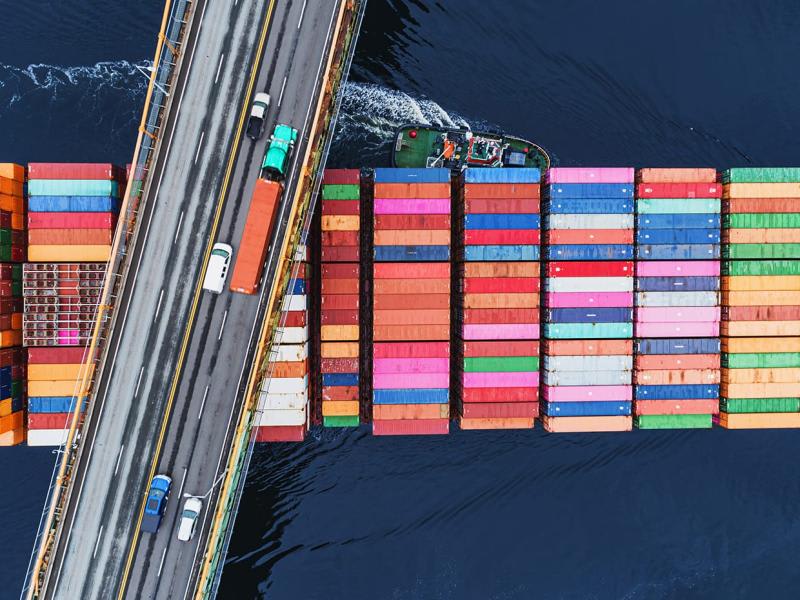The world is getting smaller, isn’t it?
Picture this: the world's largest cargo ship is the MSC Irina. She travels between China and key ports in Asia, Europe and the Americas and carries more than 24,000 shipping containers. Curiosity getting the better of me, I found that a single shipping container can hold 10,000 pairs of shoes; 48,000 laptops; 21,000 kilos of coffee beans; or 100 washing machines. Each of these containers are helping thousands of companies to trade globally.
A ship like MSC Irina is a symbol of trade and possibility. It signals to businesses that no customer is off limits. When Irina leaves her berth, she opens up new frontiers for companies to do business around the world.
What is the middle-market?
The middle market in itself, is often difficult to define. However, it represents a vital segment of the economy. These companies are typically defined by annual revenues, employee count, or deal size, although definitions vary globally.
These organisations can include privately owned businesses, family-run enterprises, and publicly traded mid-cap firms. Despite their size, these businesses have less public visibility. However, they are critical to economic stability and growth.
Middle-market businesses account for a significant portion of employment and GDP. Their resilience during economic downturns and ability to innovate makes them essential drivers of productivity.
As the "unsung powerhouse" of the economy, the middle-market is pivotal in shaping sustainable economic recovery and long-term growth.
How the middle-market creates value and impact in international trade
You might imagine that only the largest companies use the MSC Irina. Far from it. While hard data is hard to find, it’s a fair estimate to assume that at least a quarter of all containerised exports are supporting small and medium-sized companies looking to trade internationally.
For a small or medium-sized company, succeeding internationally can be incredibly difficult, as they have to navigate between different, complex local regulatory requirements to achieve their global ambition. However, every day, our professionals help businesses in the middle market grow and expand internationally.
The impact of middle-market businesses on both local communities and the global economy is profound. When you take the scale and influence of these companies, it’s clear that they are not merely the backbone of local markets – they are powerful drivers of global growth and innovation.
The numbers speak for themselves:
- 20 million companies worldwide form the global middle market
- They employ half a billion people
- They generate a combined annual turnover of $10 trillion, contributing a remarkable 10% to global GDP
It continues to amaze me that this segment of the economy is under-appreciated and underestimated, but not at RSM.
Regardless of which economy they operate in, middle-market companies share common ground. They are large enough to make a significant impact within their sectors but are not as expansive or resource rich as multinational corporations. They often represent the "sweet spot" of the economy – big enough to achieve operational efficiencies and influence, yet agile enough to innovate and adapt quickly to changing conditions.
From family-run manufacturers that have evolved into international exporters, to tech pioneers transforming how we live and work, the middle-market is a powerhouse of creativity and resilience. Its influence reaches far beyond numbers – it fuels innovation, creates jobs, and sustains communities.
Despite their significant contributions to the global economy, middle-market businesses often face unique challenges that set them apart from both smaller SMEs and larger corporations.
We have summarised them into three categories:
Growth in the middle-market
Middle-market companies both enjoy and grapple with growth. From lacking the people to properly facilitate mergers and acquisitions to lacking the capital funding to fuel expansion and tech adoption, middle-market companies can risk plateauing if their resources cannot match their ambitions.
Digital risk-taking in the middle-market
Middle-market businesses have to take disproportionate risks to adopt new technologies, whether because of the size of capital required or the amount of internal resources needed to effectively change.
Pressure points in the middle-market
Middle-market companies also face increased regulatory and logistical pressures as they grow. These pressures can be difficult to manage without the robust resources and experience of larger companies, putting them at greater risk of disruption.
Even with those challenges, we underestimate middle-market companies at our peril. They are often catalysts of wider growth trends and the architects of new trading routes and opportunities. They are also often the engine room of local economies, employing locally and benefiting communities along the way.
If you lack scale and deep pockets, you have to work smarter to find solutions. That's why middle-market businesses are agile enough to develop inventive solutions.
When you think about those products and services being shipped around the world, these themes start to make sense. The world isn’t just getting smaller for business travellers like me - it’s getting smaller for businesses, too.
I think it was HSBC that coined the term “micro multinational” – these are businesses that start small and start internationally. They might be set up in Australia but manufacture in Bangladesh and distribute to Europe. This approach flips the traditional business growth model on its head - we used to assume growth would come from the local market outwards, but not anymore.
So, if you see the MSC Irina, or a ship like her, in a port near you, spare a thought for the thousands of middle-market businesses she is helping. They are all striving for the same thing - growth and prosperity against the odds.





